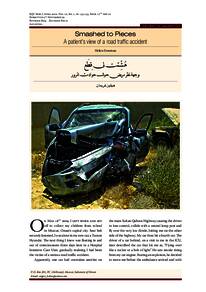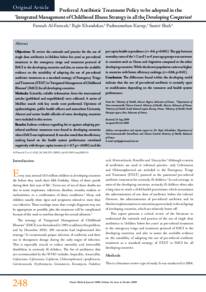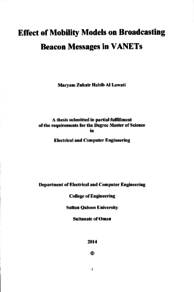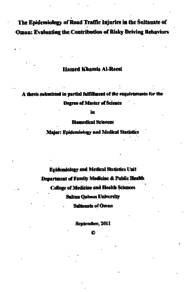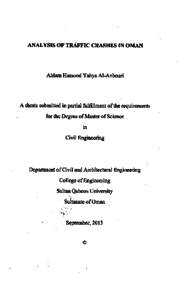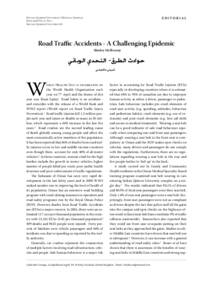Document
Using growth mixture modeling for clustering Asian and North African countries on the road injury death trend (1990–2010).
Identifier
DOI 10.5001/omj.2017.78
Contributors
Kazemnejad, Anoshirvan., Author
Zayeri, Farid., Author
Publisher
Salari, Maryam, Kazemnejad, Anoshirvan, & Zayeri, Farid (2017). Using growth mixture modeling for clustering Asian and North African countries on the road injury death trend (1990–2010). Oman Medical Journal, 32 (5), 417-424.
Gregorian
2017-09
Language
English
Subject
English abstract
Objectives: The physical injuries and financial implications as a result of road accidents have serious economic, cultural, and social effects. We conducted this study to determine any changes in the trend of road-accident-related deaths in Asian and North African countries from 1990 to 2010. Methods: The current study was carried out using data from the Global Burden of Disease database. First, the process was assessed using the growth curve divided into six regions. Moreover, the classification was done based on the death rate using growth mixed modeling. Results: The road injury death trend for men had more variations than women. Classification of these countries based on mortality using the latent growth mixture model resulted in more homogeneous classes according to trend in road fatalities. Disregarding gender and sex, there were four optimal classes. The first three classes had a decreasing trend with the third class having the greatest decreasing trend. South Korea and Taiwan were in this group. Afghanistan, Indonesia, Thailand, Iran, the UAE, Saudi Arabia, and Oman lay in group 4 and had an increasing trend in road injury deaths. Conclusions: Successful interventions that developed countries have used to avoid casualties of road injuries could be used in developing countries. These include passing laws making the use of seatbelts and child seats compulsory and determining appropriate speed limits.
Member of
Resource URL
Category
Journal articles


